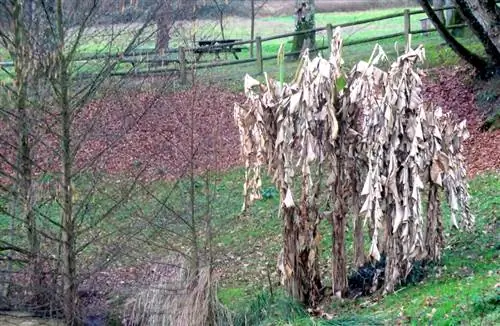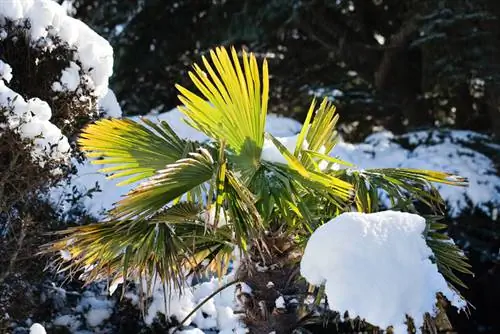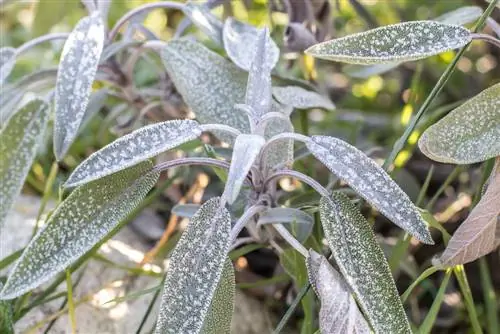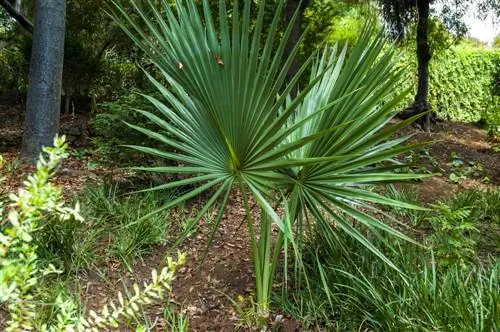- Author admin [email protected].
- Public 2023-12-16 16:46.
- Last modified 2025-01-23 11:22.
Washingtonia robusta, with its fan-shaped fronds, is an attractive palm that is also popularly cultivated in this country. However, since we do not have the climate of Mexico, a challenge awaits us every year at the end of autumn: safe wintering.

How do I overwinter a Washingtonia robusta palm?
In order to overwinter Washingtonia robusta successfully, the palm should be protected from temperatures below -3 °C. Ideally it is placed in a cool, bright room, such as a greenhouse, and watered sparingly and not fertilized during the winter months.
Palm tree only survives very light frost
Washingtonia robusta, also called Washington palm, petticoat palm or priest palm, is hardly hardy, although it tolerates cold well. But while it continues to sprout at 5 °C, it becomes life-threatening for it at temperatures just below zero.
Washingtonia robusta should under no circumstances be affected by temperatures exceeding -3 °C. If it gets colder, the leaves will suffer frost damage. If the thermometer falls below -8 °C, the entire palm tree dies. This is why this type of palm tree is not suitable for permanent residence in the garden. A large, mobile bucket is ideal for her so that she can breathe fresh air during the warm season.
Safe wintering in winter quarters
If you have a greenhouse, you can put the palm tree in it from the first frost. But other rooms that are as cool as possible with light are also suitable for wintering, as long as they offer enough space and are easily accessible. Warm places like the living room can also serve as winter quarters if necessary. However, there is a risk that dry heating air will make the palm tree more susceptible to diseases and pests. During wintering, the palm tree still needs to receive care:
- occasionally water something
- the warmer the palm tree is, the more light and water it needs
- spray regularly with water in very warm places
- stop fertilizing
Tip
When winterizing the palm tree, you should first avoid direct sunlight as it can burn the fronds. First place them in partial shade for two weeks.
Outside only with winter protection
Young palm trees and container specimens cannot survive outside. In mild regions of the country, an older petticoat palm can be planted out. It should definitely be rooted in a protected place, otherwise its overwintering may fail. Additional, extensive winter protection measures are essential to protect you from frost and moisture:
- place a mobile, heated greenhouse over the palm tree
- alternatively, wrap the trunk with a heating coil
- also heat the upper layer of the earth
- Cover palm fronds with breathable fleece






